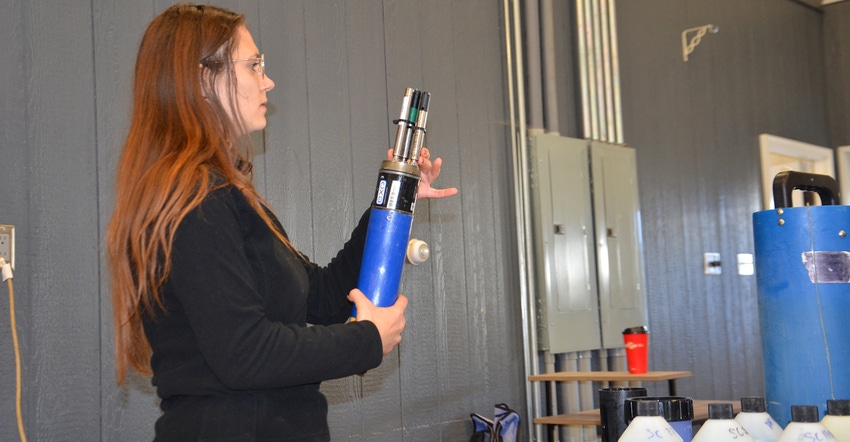November 14, 2022

At one time, people who monitor water quality in streams in rural Indiana didn’t think they needed to monitor streams after rain events during winter months. Now they do. And what they know now might help you make different choices about applying fertilizer and pesticides.
“We changed our methods after we saw spikes in nutrients in stream flow after a rain event, even if it was in late fall or winter,” explains Bob Barr, a research scientist at Indiana University-Purdue University Indianapolis (IUPUI). Barr conducts ongoing water quality studies along the School Branch Watershed in eastern Hendricks County, Ind. It’s part of a much larger watershed that feeds into Eagle Creek Reservoir, one source of drinking water for Indianapolis. Barr has led studies in that watershed dating back 16 years.
Besides Barr’s sampling efforts, two continuous monitoring stations supported by the U.S. Geological Survey take readings in the stream every 15 minutes year-round.
“If farmers spread or inject fertilizer in the fall and weather conditions are right, we see spikes in certain nutrients after a big rain, even when crops aren’t in the field,” Barr says. Automatic samplers set up by Barr and his staff capture data during rain events.
“We’ve talked about these findings, and now more farmers adjust their programs so they’re not fertilizing so far ahead of when the crop needs a nutrient,” he says. “One benefit of our work is that more people are aware that how they manage nutrients can make a difference in what ends up in water in nearby streams.”
Testing protocol
What do people who monitor water quality look for? Aleia Couchman, an IUPUI graduate and now a hydrologist with USGS, recently told visiting FFA members at Mike Starkey’s farm in Brownsburg, Ind., what different things sensors typically target in water sampling and monitoring.
How would water in a stream alongside your fields score? If you’re not sure, should you find out? Could how you manage land that feeds into nearby streams determine what sensors detect during the year?
Here’s a look at what these water-quality studies monitor:
Oxygen. Most people analyzing water composition want to know about oxygen content, Couchman said. It’s an indicator of how well the water could support life.
Chlorophyll. Why look for chlorophyll? Couchman explained it’s an indication of algal growth. Too many nutrients in the water spur the growth of algae. She noted they don’t run this sensor in the School Branch study, but it’s useful in seeing how a stream reacts to nutrients.
Temperature. Those monitoring water quality record the temperature of the water and use it as an indicator of various activities.
Turbidity. The more sediment in the water, the cloudier it becomes. “The amount of sediment entering a stream during a rain event can indicate erosion,” Couchman said.
pH. Is the water alkaline or acidic? Readings below 7.0 are acidic, and pH values above 7.0 represent an alkaline solution.
Specific conductance. How well do electrical impulses move through water via ions and dissolved metals? This is a measure of surface runoff, Couchman explained.
Nitrate plus nitrite and orthophosphate. These two separate measurements both indicate how much runoff is occurring from various sources, including from ag land.
Comments? Email [email protected].
You May Also Like




